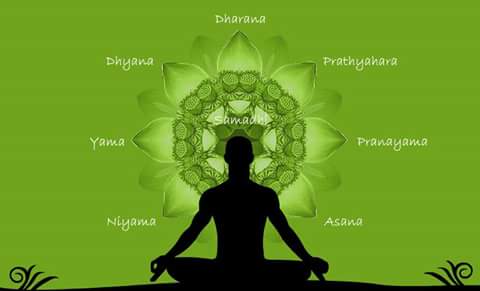By Stephanie Bucklin
As a student of Patanjali’s Yoga Sutras, I’ve come to deeply appreciate the profound teachings of the Eightfold Path of Ashtanga Yoga. These eight limbs provide a roadmap for spiritual growth, guiding practitioners from ethical foundations to the heights of self-realization. Among these teachings, the Yamas and Niyamas—the ethical precepts of yoga—hold a sacred place in my personal journey.
The first Yama, Ahimsa or nonviolence, has been one of the most transformative practices in my life. Nonviolence extends far beyond abstaining from physical harm. It calls us to consider the impact of our thoughts, words, and intentions, reflecting on how they contribute to the energy we bring into the world.
Understanding Violence Beyond the Physical
As I’ve explored Ahimsa, I’ve come to recognize how violence manifests in subtle yet pervasive ways. Words, for example, carry powerful energy. When we gossip, criticize, or speak poorly of others, we project negativity that can cause harm. Even more insidious are our thoughts—those quiet judgments and self-critical voices that can feel so personal but ripple outward, shaping the energy we project.
Violent thoughts, often born from self-judgment and low self-esteem, reveal the separation we experience from our true selves and from others. This separation, as taught in A Course in Miracles, is at the root of suffering. When we judge another, we are also judging ourselves, perpetuating an inner violence that keeps us from experiencing peace.
Bringing Nonviolence into Daily Life
The practice of nonviolence, then, is not passive. It requires mindfulness and discipline in every moment. Each time we catch ourselves in a negative thought or harsh word, we have the opportunity to pause, reflect, and choose differently.
For me, this practice has been a process of peeling back layers of conditioning and reconnecting with compassion. It’s about cultivating awareness of my inner dialogue and making intentional shifts toward kindness—both toward myself and others. This effort is informed by the teachings of Christ Consciousness, which remind us that judgment only deepens our sense of separation. True peace arises when we replace judgment with compassion.
The Eightfold Path and Inner Peace
Ahimsa is only one piece of the Eightfold Path, but its practice interweaves with every other limb. As I commit to nonviolence, I find my asana (postures) practice becomes more grounded, my breathwork (pranayama) steadier, and my meditations (dhyana) deeper. Nonviolence is the thread that weaves these practices together, creating a tapestry of peace within and around me.
True nonviolence requires me to live in alignment with all aspects of the Eightfold Path:
- Yamas (ethical restraints) guide how I interact with the world.
- Niyamas (internal observances) encourage inner discipline and self-care.
- Asana (posture) and Pranayama (breathwork) connect me to my physical body and life force.
- Pratyahara (sense withdrawal) and Dharana (concentration) foster inner focus.
- Dhyana (meditation) opens me to higher awareness.
- Samadhi (blissful absorption) allows me to transcend duality and merge with the divine.
In this way, Ahimsa is both a starting point and an ongoing journey, teaching me to live in harmony with myself and others.

Lessons Learned on the Path
Through years of practice, I’ve discovered that nonviolence is not simply about avoiding harm—it’s about actively cultivating love, kindness, and compassion. It’s about seeing every interaction as an opportunity to bring peace into the world.
This perspective has profoundly changed how I move through life. By practicing nonviolence in my thoughts, I’ve learned to release self-criticism and embrace self-love. By choosing nonviolence in my words, I’ve built relationships rooted in understanding and respect. And by embodying nonviolence in my actions, I’ve created a life aligned with my highest values.
As I continue this journey, I am reminded that nonviolence is not a destination but a practice—a way of being. It is a daily commitment to live in peace, to see the divine in all beings, and to reflect that divinity back into the world.
Closing Reflections
Patanjali’s Yoga Sutras offer us the tools to transform not only ourselves but the world around us. The practice of nonviolence, rooted in the Yamas and nurtured by the Eightfold Path, leads us toward a life of harmony and purpose.
For me, living in Ahimsa has been a journey of deep healing and awakening. It has shown me that peace begins within and radiates outward, touching everything it encounters. This is the heart of yoga—a union with our true nature and with all of creation.
May we all walk this path with mindfulness and love. Om Shanti.
Namaste
~S
Embark on Your Pathway to Peace
Are you ready to embrace a life of balance and freedom from suffering? As a Holistic Health Practitioner, I am passionate about helping my clients find harmony in mind, body, and spirit.
Through my Pathway to Peace 90-day program, you will explore powerful practices drawn from holistic wellness principles, including mindfulness, movement, and spiritual connection. Together, we’ll work step-by-step to help you release what no longer serves you and cultivate greater inner peace and balance.
This journey is designed to meet you where you are and empower you with the tools to create a sustainable, harmonious lifestyle. Take the first step on your pathway to peace today. Learn more about the program and enroll here: Pathway to Peace Package.
Your journey to wellness begins now. Let’s walk this path together.


